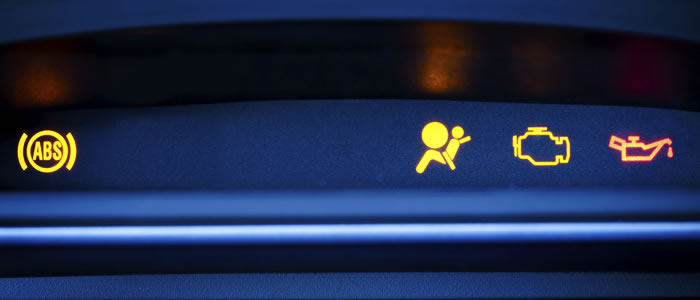
If a warning light illuminates on the dashboard, don't ignore it. Treat it as a danger sign and investigate. Loosely speaking a red light means potentially serious trouble. Do not drive the car. Orange stands for caution and shows something is requiring urgent attention. Green is a reminder, not a problem. Here is what the main lights mean and how to react if they come on.
Red Lights
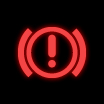
Brake system
Assuming you haven’t left the handbrake on, stop your vehicle when it’s safe and contact the manufacturer or dealer. Any fault with the brakes, brake fluid level or the related driving aids such as anti-lock brakes (ABS) and stability control (ESP) could be dangerous.
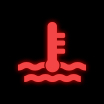
Engine cooling system
This could indicate that there is insufficient coolant fluid in the radiator, or that some sort of blockage or system malfunction has occurred, causing the temperature to rise. Stop the vehicle when safe and contact your recovery assistance provider.
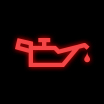
Engine oil pressure
Pull over and check the engine’s oil level. (If you are not familiar with the car, read the vehicle handbook for instructions on how to do this.) Low levels of oil need topping up urgently. Failure to do so could result in serious engine damage. The majority of petrol stations sell oil.

Power steering system
There may be a failure of the power-assisted steering. It is possible to continue your journey, but exercise due caution and have the system checked as soon as possible.

Airbags and seat belt restraints
If there is a fault with an airbag, it may not work in an accident or, worse still, could deploy unexpectedly. Head for the nearest qualified servicing workshop.
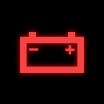
Vehicle charging system
This probably means the battery is no longer being charged. Switch off all unnecessary electrical items (such as the air conditioning and audio system) and take the car to be checked. If it shows a yellow symbol, it suggests the charge level of the battery is very low, and should be investigated further.
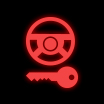
Steering lock
A yellow symbol for the steering lock may simply be there to remind you that the steering lock system is engaged before you can start the engine. However, if it’s red and you’re driving, there is a malfunction. Ideally, do not switch off the engine (as it could prevent you from restarting the car) and drive to your nearest garage to have it checked.
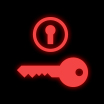
Ignition switch
When driving, this can show in amber or red, depending on the severity of the fault with the ignition switch system. Either should be examined further.
Orange lights
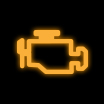
Emission control/engine management
This could flash or be permanently switched on. It suggests a fault with the engine or the engine’s associated operating software. If it doesn’t extinguish after switching the car off and back on, consult your garage.
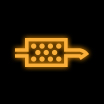
Diesel particulate filter
A diesel particulate filter is fitted to modern diesel engines to trap sooty exhaust emissions. Depending on how the car is used, it may be necessary to take an extended drive to ‘burn off’ these particles, effectively cleaning the filter. Your vehicle’s handbook will explain how to do this.

Glow plugs
It is not uncommon for a diesel glow plug to wear out. This symbol will alert the driver to any problems - which can be rectified inexpensively by most garages.
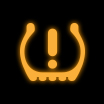
Tyre pressure monitoring
If your car has tyre pressure monitoring, it will signal only when one tyre falls to a significantly lower pressure than the other three tyres. (If all tyres gradually lose air over an extended period of time, it may not alert the driver.) If you see this symbol, check all tyres’ air pressure as soon as possible. This is no substitute to checking tyre pressures on a regular basis.
UK breakdown cover
See how we keep an eye on you while you keep an eye on the road.
